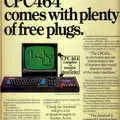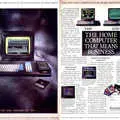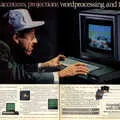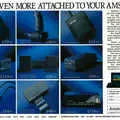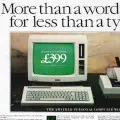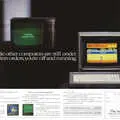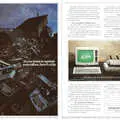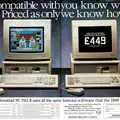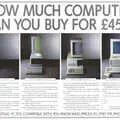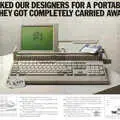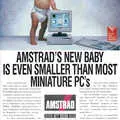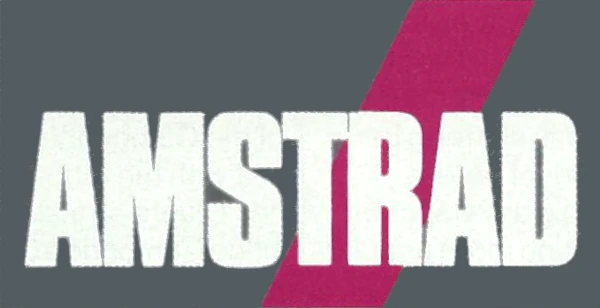
Amstrad Advert - February 1988
From Personal Computer World
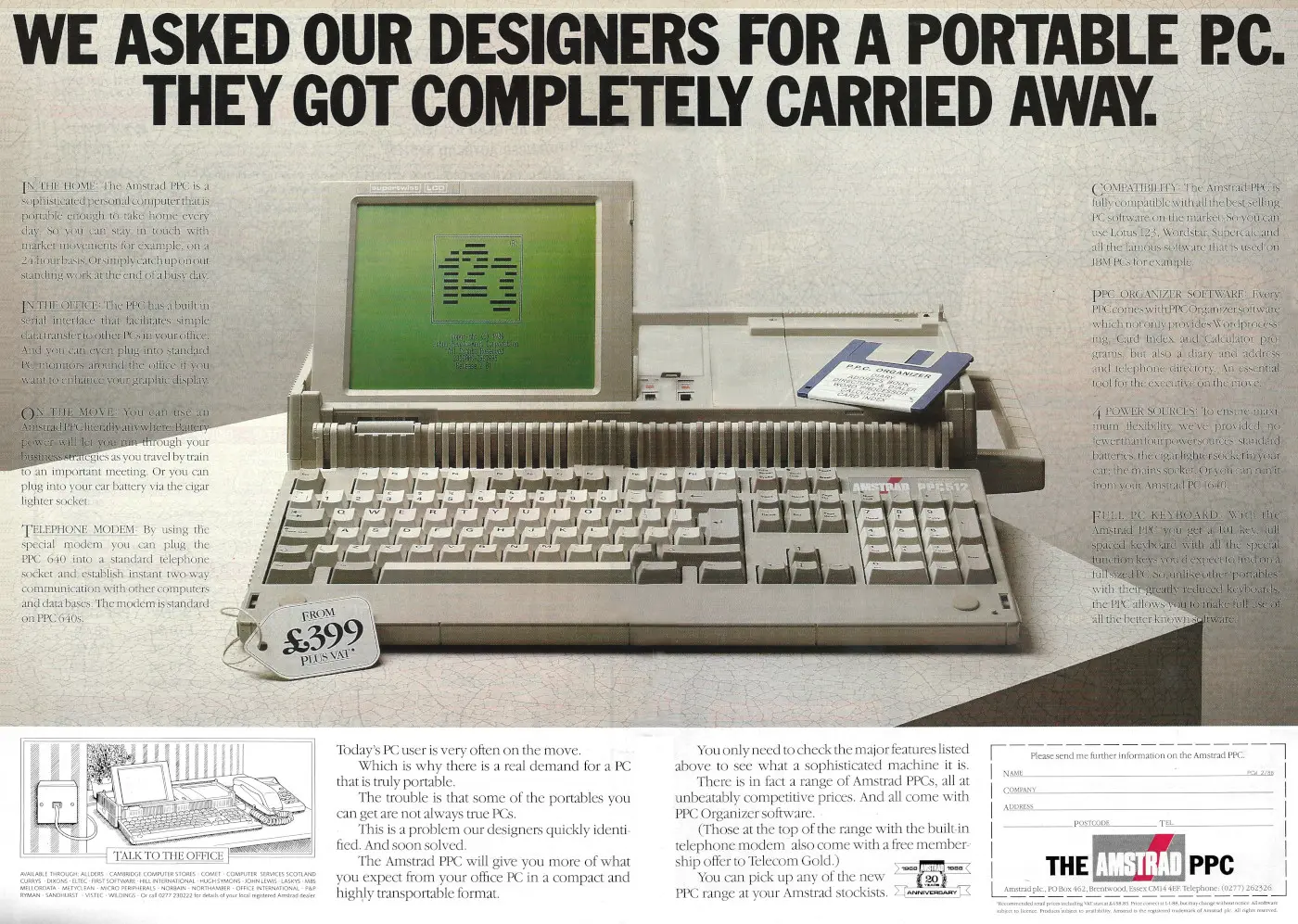
We asked our designers for a portable PC. They got completely carried away.
Launched at Comdex Fall '87 in Las Vegas and at the UK's Which Computer? Show, the PPC range of not-quite-laptops was Amstrad's entry into the portable market.
It was fully IBM compatible and ran an NEC V30 - an enhanced version of the Intel 80C86 - at 8MHz, and because of its size it sported a full-sized AT-type keyboard.
The entry-level PPC512 (Portable Personal Computer) of the advert, which retailed for £399 - about £1,400 in 2025, came with 512KB of memory and a single 3.5" floppy disk drive.
There was an improved model - the PPC640, for an additional £200 - which came with two floppy drives, 640KB RAM, a built-in Hayes-compatible modem, and a copy of Softklone Corporation's Mirror II communications software.
The PPC machines used the newer Supertwist LCD technology for the display. This supposedly gave better contrast and was fully reflective so it didn't need back light, thus reducing power usage. They could also run off a car cigarette-lighter socket, or from ten internal standard D-cell batteries for up to eight hours.
Alan Sugar seemed confident that the new portable machine would sell well, saying that Amstrad would be able to expand the market:
"considerably, as much as we did with the word-processor and PC markets[1]".
The PPC range went on sale to the public in January 1988. Glyn Moody, writing in Practical Computing's February 1988 edition, wasn't too sure about it, saying that "it is unclear whether there is a niche in the market that it will fit into".
However, he was more impressed with the internal modem, which Amstrad had designed itself. Stand-alone modems which could support the same V.22 bis 2,400 baud standard could often cost as much as the top-of-the-range PPC by itself.
He concluded in his review of a pre-production model, seen at Amstrad's headquarters in Brentwood, that:
"The Amstrad PPC is an ungainly beast, hovering somewhere between a true portable and a luggable. It weighs only 5.4kg, but it is bigger and bulkier than most battery-operated machines. The screen contrast is not brilliant [and] the green of the LCD is of a particularly bilious kind; it would not be pleasant working from it all the time. The LCD screen is not back-lit and not very legible, which may be a major drawback for many[2]".
Alan Sugar, meanwhile, said of the screen issue that:
"People are screen mad: if you can read what's on the screen, that's good enough".
Date created: 15 February 2024
Last updated: 11 December 2024
Hint: use left and right cursor keys to navigate between adverts.
Sources
Text and otherwise-uncredited photos © nosher.net 2025. Dollar/GBP conversions, where used, assume $1.50 to £1. "Now" prices are calculated dynamically using average RPI per year.
